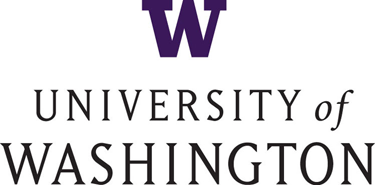Newswise — As the city of Seattle shut down in March 2020 to try to slow the spread of COVID-19, a group of University of Washington researchers got to work.
The team developed a project that scans the streets every few weeks to document what's happening around the city — answering questions such as: Are people outside? Are restaurants open? This project, which began in May and will continue until at least fall of 2021, collects images of how Seattle has reacted to the pandemic and what recovery looks like. This creates a massive dataset that documents what was happening at any particular point in time. The researchers hope the data will help answer questions about what makes a city resilient and how to better prepare for potential future pandemics and other disasters.
The team will present its project Oct. 1 at the Environmental and Occupational Health webinar through the UW School of Public Health.
"We talk about resilience a lot in disaster sciences. There are lots of theories about what makes a community resilient to natural hazards, but we don't fully understand resilience to pandemics, partially because we just haven't been through these events at this scale," said co-lead researcher Nicole Errett, an assistant professor of environmental and occupational health sciences. "This project provided us with an opportunity to see what's important for resilience in this context. What are people doing? Where are they recreating? Are they following distancing and mask-wearing recommendations? And how do their activities change as the pandemic progresses?"
To track what's happening in Seattle, the researchers drive a car with a camera similar to Google Street View on top throughout the city.
"This is an amazing tool for quickly gathering highly perishable data from across the city," said co-lead researcher Joseph Wartman, a professor of civil and environmental engineering. "Unless we capture these scenes now, these sights — and the rich data they contain — will be lost forever. I can already see a significant difference between the May dataset and what's happening now. For example, when we first drove past Harborview Medical Center, no one was present on the block. Now it's beginning to look like it used to."
The team's route takes between eight and 11 hours to drive each time.
"We wanted the route to capture different aspects of the city — such as restaurants, hospitals, schools, parks and museums — and also make sure we had an equal representation across a variety of neighborhoods," said co-lead researcher Scott Miles, a senior principal research scientist in the human centered design and engineering department.
The researchers try to start the drive at 8 a.m. on Friday, every few weeks, to maintain a consistent schedule, but it depends on weather, specifically the camera doesn't work in the rain. They also drive on some Sundays to try to capture any variation between weekdays and weekends.
The Street-View-like camera creates huge datasets — each drive is turned into tens of thousands of images that make up an almost 2-terabyte file. So the researchers are developing algorithms to help them identify things such as cars, people and whether they are physically distancing in each frame. Identities — such as human faces and vehicle license plates — will be blurred.
"When people study disaster recovery, they often look at location data from smartphones or transaction data from debit or credit cards," said co-lead researcher Youngjun Choe, an assistant professor of industrial and systems engineering. "But these data points do not necessarily capture everyone in a community. By looking at our images, I hope we are creating a dataset that better represents all people who live and work in Seattle."
Any insights gained from this project, such as how people respond to mask recommendations or which populations might need more resources, can help other cities better understand their own recovery trends the researchers said.
"People talk about this as a 100-year pandemic, because the last major pandemic was in 1918," Errett said. "Now conditions are much different — we have increased population density, climate change and more. I don't think we're going to be waiting another hundred years. So whatever we can do to learn from this experience will help us develop better policies and plans for the future."
Jaqueline Peltier, an operations specialist in civil and environmental engineering; Matthew Martell, a doctoral student in industrial and systems engineering; Christopher Salazar, a master's student in industrial and systems engineering; and Vanessa Yang, an undergraduate student in statistics and informatics, are also part of this project. This research was funded by the National Science Foundation.
###
Grant number: CMMI-2031119
